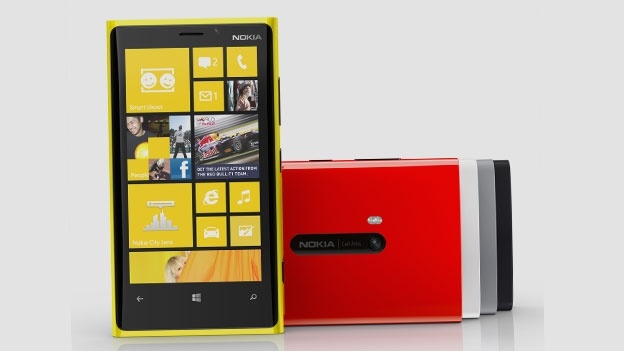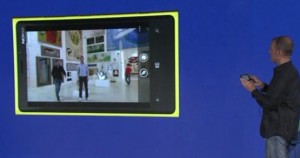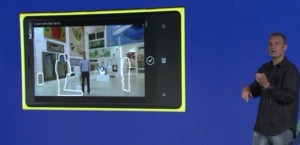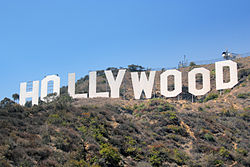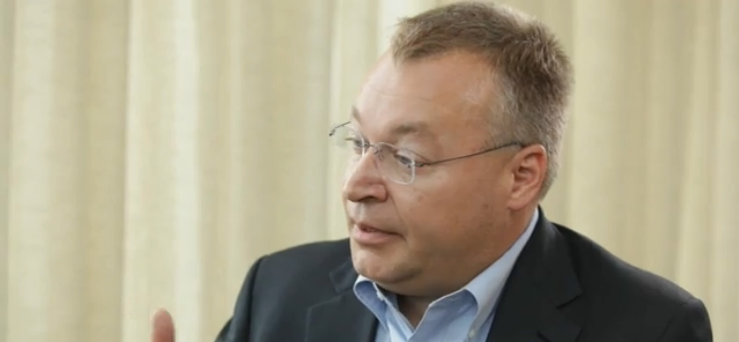Yesterday morning, like every morning in the past five years, I put my cup of coffee on my desk, open my laptop, click simultaneously on the seven bookmarked pages that start my day and they all talk about the same thing: film. I browse the news, scroll down, then an article catches my attention and makes me spit out my coffee, out of my nose. I move from site to site, hoping that the article is just a rumour, but it’s no use. I know Empire Film Magazine would not lie to me, so I get a tissue, blow my nose, wipe the desk and stare at the article: ‘Adam Berg Hired For Videodrome Remake; Ads man will direct the new pic’. The shock is indescribable, the disappointment insurmountable. David Croneberg’s iconic ‘body-horror’ film has not just been green lit for a remake; it actually has a director, signifying that it probably has an ongoing script and a producer. As I stared in disbelief, the one question that kept running through my mind was ‘Why?’ Why remake a classic? Why remake a film that, even though did poorly commercially, is now a symbol, amongst many others, of media violence and a whistle-blower on eighties society’s apathy when it came to television programming. Why remake it now, of all times, when television itself is slowly dying, replaced by the smaller screen of our laptops and when its current programming is relying on massive budgets to keep at least a minimum amount of audience and survive the next season? All of these questions ran through my mind but then, after the emotional part of my brain calmed down, I thought that the ‘why’ I kept repeating was not only for the benefit of ‘Videodrome’. It was resonating for all remakes I could think of, good and bad. Why is Hollywood so hell-bent on remakes? The announcement of David Fincher taking over ‘The Girl with the Dragon Tattoo’, the opening of ‘Let me In’, the mess that was ‘Clash of the Titans’, all of these films have either aggravated or excited audiences, me included, but there is always that initial question of ‘why’, followed by an instant judgement on the project, either positive or negative. Thinking about it, I am guilty of always being very negative after any remake announcement and I am starting to think that I am wrong in doing so. After all, everyone deserves a second chance, even in film. Only problem is, when the first time around the film was a success and enjoys its days as a classic, why pull it out of retirement and give it a makeover? Is it only for the sake of money or is there actual artistic motivation behind it? I’d like to believe it’s the latter but sadly, it might be far from it.
If I asked any person on the street about their opinion on Hollywood remakes, I’d be lucky to get a passionate response. Most people have had, in one occasion or another, bad experiences with this type of film, either because one of their favourites was used, or because the result was that bad that they immediately deny the chance for the original to impress. The rare gems that make it past the initial stage of acceptance are always under immense pressure to be on the same level as their predecessor, so the remake seems to be the weak child that always tries to impress his parent, to little or no avail. His stepbrother, the reboot, has, at least since 2002 with the seminal film that resurrected superheroes, Sam Raimi’s ‘Spider Man’, been far more accepted. It managed to gross millions of dollars, is responsible for at least five current major franchises (Spider Man, X-Men, Batman, The Avengers, Star Trek and now Superman) and people are excited. Say reboot and everyone is all ears and no complaining. Why? Because a reboot does not necessarily mean same story, same exact characters, same universe. The reboot will take principal characters and twist them into completely different ones. Batman no longer has nipples on his suit and ridiculous enemies to fight (exit Mr. Freeze), but is dark, borderline psychotic and his enemies are gangsters, terrorists and religious fanatics. Familiar? Yes, it does symbolise modern day America within the comic book universe. A remake would’ve probably changed Batman’s costume, had different taglines and brought in the same villain again. Let’s face it; the poor remake is no match for the reboot in this day and age. When audiences are looking for something fresh, the reboot will take the original dish, keep the ingredients but make it taste like new and different. The remake gives the audience re-heated soup that will never taste as fresh as that first time.
Within the pantheon of remake titles, I can give some examples of failed attempts in trying to impress a second time, using the same material. Tim Burton’s famous flop, ‘Planet of the Apes’ (2001) proved that even though Hollywood had made giant leaps in moviemaking technology and imagery, it still could not beat that old-school feel you get when Charlton Heston swears at a monkey (ok, I mean ape) and you can see the prosthetics on the actors’ damn dirty paws. Despite Tim Roth’s relentless efforts to portray General Thade as the archetypal racist villain and Helena Bonham Carter’s Ari trying to dissolve this ape-human apartheid, Burton did not conjure up the charm of the original. This was for two reasons: number one, a common one amongst remakes that flopped, is because what started off as an alternative sequel to ‘Beneath the Planet of the Apes’ (1970) became a near 20-year battle amongst scriptwriters and 20th Century Fox, who could not agree on script, directors and actors. The end result was whatever could be salvaged of the original concept and a heavy reliance on special effects and on ‘the twist’ that enraged all geeks and fans of the franchise. Second, this is what happens when producers back a film that they do not believe in anymore! There is no charisma, no desire to create, no enthusiasm in the way this remake was done, just a feeling of ‘Let’s try and make as much money as fast as we can because this ship is sinking’. The film now lives in memory as one of the worst remakes ever made and as a warning about the heavy reliance on technology as opposed to plot and character development. The same can be said about the recent ‘Clash of the Titans’ (2010) remake, where director Louis Leterrier, a fan of the original (just like Tim Burton was a fan of the Apes franchise), wanted to bring the film to a new generation. I am the first to point out that the 1981 version was in no way perfect and that even though it is a classic in the fantasy genre, it became less accessible to later audiences and unfortunately, aged very badly. In that instance, a remake was not without reason, however 2010 brought us 3D and as usual, Hollywood insisted on the film’s conversion to this new technology, especially after the record-breaking success of Cameron’s ‘Avatar’. Leterrier made concessions to the studio and behold the result; critics and fans booed the final product and its sequel ‘Wrath of the Titans’, I hear, is even worse.
Another instance of a failed remake is the 2006 pagan-horror film ‘The Wicker Man’ (‘Aaaahh, the bees, not the bees’). Yes, the Nicolas-Cage-goes-mad-and-hits-women film that made everyone laugh and realise how much he or she missed Christopher Lee. The original, made in 1976, was simplicity itself, including beautiful shots of the Scottish Isles, a very toned down, yet menacing, Christopher Lee, a very ambiguous hero (Sergeant Howie), resurrected folk songs, a controversial theme and, let’s all be honest, Britt Ekland’s dance scene (although to the disappointment of many men, it was later revealed that it had been a body double and not the actress herself). Beautiful and haunting, the film is described as the ‘Citizen Kane of horror’, largely because it slipped into obscurity after its release. This is the one instance where I disagree with Hollywood about remaking a film like ‘The Wicker Man’. The 2006 Nic Cage version threw out all meaning and controversy in favour of jump scares and gender reversals. If the sole reason was to lift the original film out of the shadows and to make it a nonsensical feminist promo meant for teenagers then mission very much accomplished. Acting, plot and sound were butchered in order to impress an unimpressed audience, Nicolas Cage as a laughable lead, unable to re-create the Christian stubbornness of Edward Woodward’s Howie and as much as I love Ellen Burstyn, she could not compare to the utterly chilling portrayal of Lee’s Lord Summersisle. In an effort to attract the hip crowd, the film flopped and is now a cult rental in video stores, whereas the original still enjoys its place amongst the ranks of the greatest horror films.
I can honestly understand the concept of remake in one instance; the case of the foreign films. My father once pointed out to me ‘Some people, Ersi, do not want to read subtitles and try to understand a different culture’. Unfortunately, this does not just apply to US audiences, but many other countries too, yet the US has the monopoly on the English-language remake. It is an understandable want to remake a foreign film because the dialogue is in another language, the setting is in a wholly different country, the actors are unrecognisable and the culture does not seem familiar to other audiences and this has been a long-standing trend. Akira Kurosawa, the famed Japanese director, was fascinated by the westerns of John Ford and was so heavily influenced by the genre that he included in his films his equivalent of cowboys, the samurai, and kept Ford’s main theme, the extinction of the cowboy/samurai and the advent of industrialism that slowly pushes out all romantic notions of honour and justice. His most famous work, ‘The Seven Samurai’, was a genuine two-and-a-half-hour masterpiece in 1954, innovative, bold and now considered one of the pivotal influences of US directors Sergio Leone, Martin Scorsese, John Sturges and George Lucas. Sturges’ ‘The Magnificent Seven’ starring, amongst others, Yul Brynner and Charles Bronson, was the remake of Kurosawa’s film, done six years later, and is considered one of the most popular westerns in the history of the genre. What is fascinating is that the single US film genre was taken from its roots, taken to a country where the Americans ravaged only nine years earlier during World War II, reconstructed to fit Japanese culture and then the country that originated the concept remade its own final product later. This shows that the remake can prove to be very useful to spread an idea, a concept or a script, worldwide to audiences that would otherwise not understand. This is not just a question of reading subtitles, like my dad used to say. It’s the alien nature of the language and the culture that dissuades many people of going to the movies if a film like ‘The girl with the Dragon Tattoo’ was playing, hence Fincher’s swift remake, two years after the original. Who would have noticed a foreign film like ‘Ringu’ if Naomi Watts had not jumped on board of the remake and terrified everyone off their TV sets in ‘The Ring’. As we speak there is an ‘Old Boy’ remake in production, starring Josh Brolin, Elisabeth Olsen and Sharlto Copley, not because the original is not good and groundbreaking but because it could not be spread further than the few countries who could still either relate or appreciate it, in its original form. This goes for Kurosawa and Sturges, it goes for horror remakes like ‘The Ring’, ‘The Grudge’ or adventure like ‘Pathfinder’, or dramas like ‘The Girl with The Dragon Tattoo’, thrillers like DePalma’s upcoming ‘Passion’ and for all other future remakes of foreign films. There is that thought that maybe we have become way too lazy to even try and understand foreign films but personally I do not think it’s laziness so much as it shows that cinema is inherently and involuntarily racist thanks to widespread Hollywood involvement all over the world. It is worth pointing out though that remakes based on foreign films have not been tragically disappointing. Yes, some have failed to convey the original’s message, yet most have created successful movies either way because there is still some respect for the material (with some exceptions, *cough*Godzilla, 1998*cough*).
Okay so, trying to share a country’s filmmaking with the rest of the world through a remake, that I can jump onboard with, because it also gives the audience the choice. Would you like to stick with the original or with the ‘international’ version? There is significant enough change to make a separate movie and to add some innovation in it so it does not appear to be a completely different film. I can accept that. But what I cannot accept is remaking a movie on the sole excuse that it is old. This ageist stance that Hollywood has been developing since the mid-1990s has taken a very serious turn and has carried on till today. Whenever someone turns around and affirms that a movie has aged very badly, a probable cause being that it was not good in the first place, yes I will agree that in some cases time does not favour cinema. Not everything that is old is necessarily a classic. But why meddle in something that was not good in the first place and why not let it age and die in peace? What could go so wrong if 1924’s ‘The Wolfman’ was left silent instead of the stale 2010 version whose only merit was its retro use of prosthetics (oh, the irony). What is so bad with leaving ‘Psycho’ to its glory as the first slasher, instead of hiring Vince Vaughn to badly emulate Anthony Perkins’ performance in a colour version? Was the black and white really that bothersome?
It is quite obvious that most of the remakes I am outraged at are the horror films, who when they became unsuccessful in their production of sequels, decided to start all over again after ruining what was left of the old horror generation. Carpenter, surprisingly enough, led the remake way with ‘The Thing’ in 1982 and showed it could be done by taking only the material and the atmosphere and re-arranging the entire mood to fit a new generation’s fears. The same thing applies for ‘The Invasion of the Body Snatchers’, which has been through about four remakes, some with different titles, trying to bring the original’s sense of paranoia to the new generations that had not lived during the height of the Cold War in the fifties. These were not made to make the film look better and more appealing to teenagers. They were made because their concept was so terrifying in nature but the context had to be slightly updated. The latest to work was Snyder’s ‘Dawn of the Dead’ in 2004 where the theme of consumerism was still a central issue, very much discussed then and today. Surprise, surprise though, it doesn’t work with every horror (or any) film, as a long string of remakes has proven from 2000 onwards. ‘Texas Chainsaw Massacre’, ‘Friday the 13th’, ‘The Omen’, ‘Halloween’, ‘Prom Night’ (who the hell cares about proms anymore, really?). These were remakes that did not scare; they mildly entertained and slipped into the video store racks faster than you can say ‘corn syrup’. This is what Hollywood is doing now, it wants to easily entertain and since it cannot solely rely on its big-budget films all year-round, it has to rely on remakes to fill in the gaps, a cheap scapegoat that is starting to age itself, very badly. It’s like introducing someone to an aunt, every year, after she has had a plastic surgery. First her nose looks a little crooked, then her forehead seems strangely triangular than by the tenth time she has been introduced, she looks like shit. That is what a horror remake has become; a cut and paste face of a film that has been through so much hacking and cutting that in the end becomes barely recognisable and quite frankly ugly to watch.
So there I am, in front of my screen, coffee getting cold, staring at the ‘Videodrome’ announcement still, pondering these facts. It is safe to say that I am not a remake fan but that does not mean I am willing to shut them out and pretend they don’t exist. I have been surprised at some recent ones like ‘The Hills have Eyes’, ‘3:10 to Yuma’, ‘True Grit’, ‘The Departed’ or ‘The Mummy’ and it is these and many others that have made me ponder which one I liked more, the original or its new shiny follower. That is rare and special! But I have come across the worst of attempts to revive a classic that was and will always be alive either way. As I scroll through a rough list of remakes bound for a cinema near you, I see names that I never thought Hollywood would dare touch again. Hitchcock’s ‘The Birds’ will pass under the knife and so will ‘The Crow’ (met by heavy opposition and production difficulties) and I still wonder. Yes, remakes can work favourably for cinema’s forgotten and foreign but not being able to cope with an aging film or just plain leaving it in its own mess seems impossible, so Hollywood hires ad-makers, video clip directors or just newcomers to the studios to try to squeeze as much dollar juice as they can with very little integrity and passion going into them. Yes some have exceeded (my) expectations but most seem to inspire apathy and a sense of ‘déjà vu’, only with more CG effects, younger actors and inexperienced directors that bore most of the audience. So in conclusion, I present to you my letter to American cinema:
Hollywood, from me to you, I have been following your career with great and unabashed interest and thanks to you, I know where my passion lies but please, do not take your most memorable and prized achievements and turn them into cash cows. You try and bring concepts and stories to a public that doesn’t understand foreign filmmaking as opposed to yours and I can get behind that, but what I cannot accept is you defacing your wall of fame and silliconing your icons for the sake of dollar bills and cheap thrills. The originality and thinking you have today comes from your past and your greatest features so don’t turn around and spit on them. They are the legacy you leave for your children, not idols of clay to re-shape whenever you feel like it.
